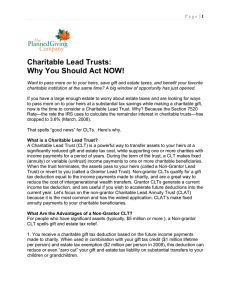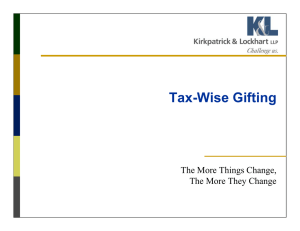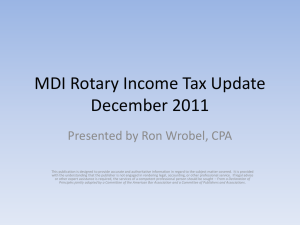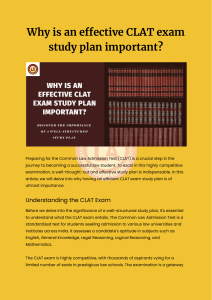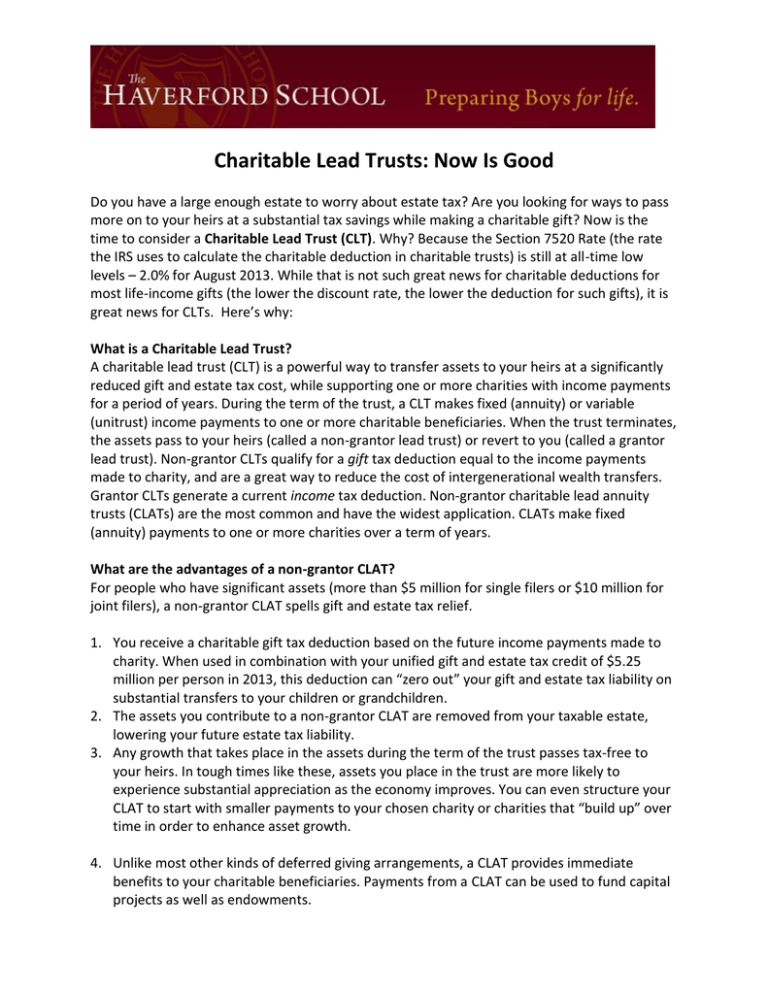
Charitable Lead Trusts: Now Is Good
Do you have a large enough estate to worry about estate tax? Are you looking for ways to pass
more on to your heirs at a substantial tax savings while making a charitable gift? Now is the
time to consider a Charitable Lead Trust (CLT). Why? Because the Section 7520 Rate (the rate
the IRS uses to calculate the charitable deduction in charitable trusts) is still at all-time low
levels – 2.0% for August 2013. While that is not such great news for charitable deductions for
most life-income gifts (the lower the discount rate, the lower the deduction for such gifts), it is
great news for CLTs. Here’s why:
What is a Charitable Lead Trust?
A charitable lead trust (CLT) is a powerful way to transfer assets to your heirs at a significantly
reduced gift and estate tax cost, while supporting one or more charities with income payments
for a period of years. During the term of the trust, a CLT makes fixed (annuity) or variable
(unitrust) income payments to one or more charitable beneficiaries. When the trust terminates,
the assets pass to your heirs (called a non-grantor lead trust) or revert to you (called a grantor
lead trust). Non-grantor CLTs qualify for a gift tax deduction equal to the income payments
made to charity, and are a great way to reduce the cost of intergenerational wealth transfers.
Grantor CLTs generate a current income tax deduction. Non-grantor charitable lead annuity
trusts (CLATs) are the most common and have the widest application. CLATs make fixed
(annuity) payments to one or more charities over a term of years.
What are the advantages of a non-grantor CLAT?
For people who have significant assets (more than $5 million for single filers or $10 million for
joint filers), a non-grantor CLAT spells gift and estate tax relief.
1. You receive a charitable gift tax deduction based on the future income payments made to
charity. When used in combination with your unified gift and estate tax credit of $5.25
million per person in 2013, this deduction can “zero out” your gift and estate tax liability on
substantial transfers to your children or grandchildren.
2. The assets you contribute to a non-grantor CLAT are removed from your taxable estate,
lowering your future estate tax liability.
3. Any growth that takes place in the assets during the term of the trust passes tax-free to
your heirs. In tough times like these, assets you place in the trust are more likely to
experience substantial appreciation as the economy improves. You can even structure your
CLAT to start with smaller payments to your chosen charity or charities that “build up” over
time in order to enhance asset growth.
4. Unlike most other kinds of deferred giving arrangements, a CLAT provides immediate
benefits to your charitable beneficiaries. Payments from a CLAT can be used to fund capital
projects as well as endowments.
So, why the fuss about the IRS discount rate?
The IRS uses a special discount rate – known as the Section 7520 Rate – to calculate the present
value of remainder interests left by charitable trusts. Published monthly, the Section 7520 Rate
is based on the federal midterm interest rate.
The key is that the lower the IRS discount rate, the lower the calculated remainder value of a
trust. In the case of Charitable Lead Trusts, where the remainder value goes to your heirs, a
lower discount rate translates into lower gift and estate taxes levied on the transfer. And,
herein resides the good news: the IRS discount rate is currently at the lowest levels in history –
it has hovered between 1.0% and 1.6% for the last six months, and was 2.4% in October, 2013.
That means big tax savings for CLT donors, as the following example illustrates.
Comparison of Benefits
ASSUMPTIONS:
Non-grantor Inter Vivos Trust established in 2012 for 10 years.
Lead Trust makes 6% annual, end-of-period payments to THS.
Original principal of $5 million has a cost basis of 100%.
Donor income tax bracket is 35%, 15% for capital gains.
Beneficiary income tax bracket is 35%, 15% for capital gains.
State income tax for trusts is 3.5%.
Value of donor's estate is $50 million. Prior taxable gifts are $0.
Transfer tax: Continue 2012 tax rates in 2013 and future years.
Average total investment return over term of trust is 8%
Annual investment and administrative fee for CLAT and no trust is 0.65%.
Gross principal
Annual payments to charity
Gift tax deduction
Total taxes and fees
Benefit to family
Benefit to charity (10 years)
(1)
6% CLAT
(7520 Rate 1%)
$5,000,000
$ 300,000
$2,841,400
$ 369,340
$5,919,082
$3,000,000
(2)
6% CLAT
(7520 Rate 6.2%)
$5,000,000
$ 300,000
$2,187,750
$1,353,803
$4,934,619
$3,000,000
(3)
No Trust
$5,000,000
$
0
$
0
$4,182,686
$6,305,449
$
0
As you can see, the advantages of a CLAT over no trust in this case are enormous. It saves
$3,813,346 in taxes and fees, leaves almost as much to your heirs, AND provides a gift of $3
million over 10 years to The Haverford School. In addition, the drop in the IRS discount rate
from a peak of 6.2% in 2007 to 1% (column 2 vs. column 1) further reduces your transfer taxes
and increases the benefit to your heirs by $984,463! More importantly, if you fund a lead trust
in today’s post-recession market, all of the appreciation that takes place within the trust during
the term will go to your heirs tax-free – a significant add-on benefit!
Comparison of Benefits
The bottom line? The time to act is NOW while the Section 7520 Rate is historically low and the
market is rising.
Like to learn more?
For more information and a detailed financial illustration, contact Sam Caldwell, Director of
Estate and Planned Gifts, at 484-417-2774 or scaldwell@haverford.org
©2013 The Haverford School. All Rights Reserved.
This information is provided as an educational service by the Office of Gift Planning at The
Haverford School, and is not intended as financial or legal advice, either in whole or in part.
Consult your legal or tax adviser before making any decision regarding this information.


